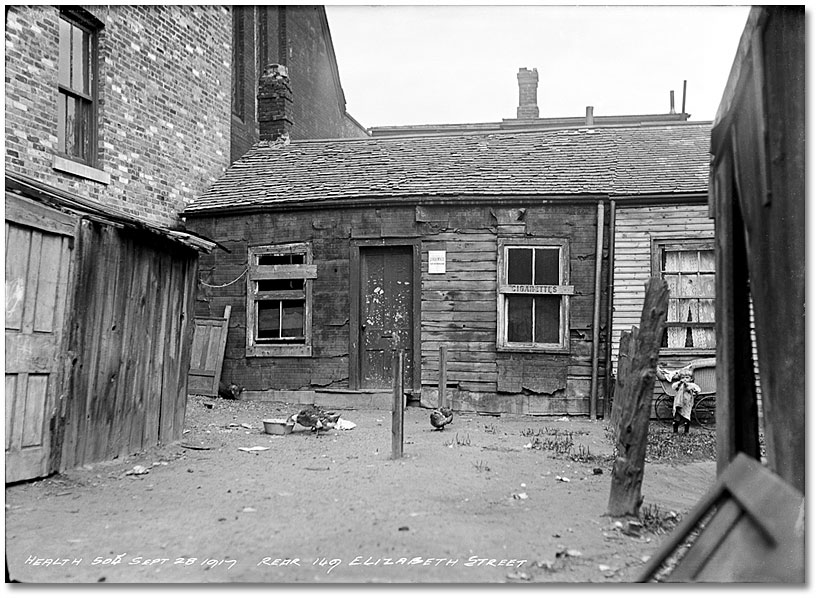Chickens in the living room, nine children crowded in a single rag-covered bed, one outdoor water tap for 16 houses were among Toronto 1910 slum housing conditions described by Medical Director Dr. Charles Hasting in a talk to the Irish Benevolent Society. Six months later, Hastings spelled out more excruciating detail in a groundbreaking report.
The Toronto Globe, November 12, 1910, summarized Hastings’s talk to the Irish:
“Fruit in the last stages of decay offered for sale, nine children huddled together in one bed under a heap of old clothes and rags because, as their mother pathetically explained, ‘It was the only way to keep them warm;’ houses overcrowded, adults of different sexes eating, sleeping and living in the same room— these were some of the examples… which would, he explained, ‘startle anyone who took the trouble to walk through the slums in our midst.’
“The problem was simple now, he stated, to what it would be twenty years hence, if not grappled with. ‘One person died each day in Canada from tuberculosis, and those slums breed filth and disease, moral and physical, which would devitalize the community unless steps were taken to prevent overcrowding in unsanitary and unhygienic houses.’”
Representatives of the city’s Associated Charities spoke of “certain missions, in which as many as fifty men were to be found of a night sleeping on wooden benches under unspeakable conditions in one unventilated room.”
“The truth is that one half not only does not know, they do not want their peace of mind disturbed by the unpleasant details of the life and sorrows of the lower classes,” Hastings wrote in his 1911 report on slum housing. With its publication, complete with graphic photos, they soon knew, and peace of mind was certainly disturbed.
Hasting, recently appointed medical director, was an obstetrician. He became a leading public health advocate after his infant daughter died from contaminated milk.
He and his medical officers examined 4,693 houses, shacks, basements, cellars and lean-tos. They condemned 390 of the housing units in which 2,133 people lived in unsanitary conditions. The inspectors found leaky roofs, water-covered cellars in which people lived, overflowing outdoor privies, shacks that offered scant protection from the cold, and shockingly high rental fees. “One 3-room shack was discovered in which were father, mother and 9 children, and in the filthy yard, 3 dogs, a horse and chickens,” Hastings wrote in the report. “All except the horse had access to the living room.”
Under Hastings’ advocacy, the report led to reforms, including stricter housing regulations, food safety, and education programs. By 1929, Toronto ranked among the world leaders in sanitation and public health reform.
Canada@150
